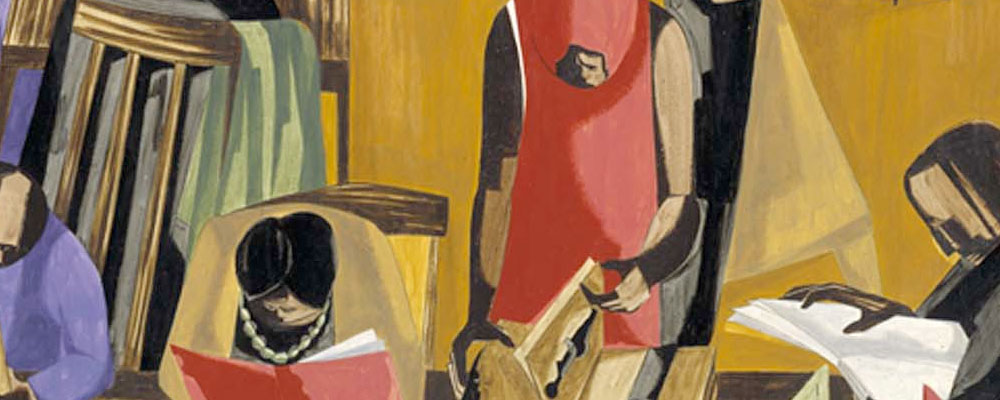Celebrating Banned Books Week by Celebrating Diversity
September 27, 2014 | Ann Kowal Smith, Rachel Burstein

Participants often tell us that they want to “read the classics” in Books@Work seminars. By “the classics” they mean canonical works ranging from Greek tragedies to Shakespeare, and twentieth century masterpieces penned by the likes of F. Scott Fitzgerald and Ernest Hemingway. Again and again, our participants also tell us that they appreciate the opportunity to explore great works of literature that participants “should have” read in school or books they would not pick up on their own.
Don’t get us wrong; we’re all for reading Shakespeare and Hemingway and we support participants and professors who read these texts. At the same time, though, we take quite seriously our role to expand participants’ view of the literary canon and to give them opportunities to read books to which they wouldn’t otherwise be exposed. Every time we work with professors to select a book for a Books@Work seminar we consider the implications of the title and author – especially when paired with other works – for exposing our participants to new examples of great literature.
Reading Maya Angelou, Willa Cather, and Annie Proulx alongside Herman Melville, Aldous Huxley and Charles Dickens sends a powerful message: great works of literature transcend race, gender and time period, among other dimensions. At Books@Work, we have an opportunity to look beyond the titles traditionally read in school or that grace the Modern Library’s 100 Best Novels list. We have a unique chance to assemble a set of texts that cause participants to reflect on the meaning of “classic,” “good literature” and who in society has traditionally been permitted to contribute to these categories.
This explicit and implied conversation about diversity in author and subject matter is rarely a comfortable one. But it is also necessary if we are to empower participants to engage with a larger set of questions affecting the literary and education worlds – questions of voice, inclusion, platforms for recognition and standards. This conversation asks participants to revise their opinion of what they “should” have read in school, considering not just their high school or college reading list, but also what was left off that list and why.
This past week was Banned Books Week, an annual awareness-raising and mobilization campaign to publicize and protest challenges to books’ inclusion on school reading lists and on public library shelves. Since 1982 when Banned Books Week began, over 11,000 distinct titles have been challenged. And while many complaints cite offensive language or explicit content, at least one researcher has found a correlation between challenges and young adult titles’ diversity in authorship and subject matter (around race, gender, disability and sexuality diversity, among others).
In other words, those books that are written by women, people of color and those who identify as LGBT or books that deal with themes of race, gender or sexual orientation are far more likely to invite complaint than those works that don’t fall into those categories. At the same time, these challenged books often play an important role in changing how people think about identity, the “other,” and America. A quick glance at the banned books appearing in the Library of Congress’ “Books that Shaped America” reveals an incredible number that deal with themes of race, gender or sexuality, or that feature authors not bearing the attributes of those traditionally included in the American literary canon. Among these books are Beloved (by Toni Morrison), The Invisible Man (by Ralph Ellison), Native Son (by Richard Wright), Their Eyes Were Watching God (by Zora Neale Hurston), To Kill a Mockingbird (by Harper Lee) and The Words of Cesar Chavez.
Over the coming months, we are working to chart the texts taught across Books@Work seminars, allowing us to be more explicit in our goal of diversifying the literary canon. There are any number of great works of literature that participants do not consider or have not heard of when they tell us that they want to “read the classics.” By teaching Toni Morrison and Salmon Rushdie alongside William Shakespeare and Nathaniel Hawthorne, we have an opportunity to signal the importance of creating a new canon for the twenty-first century, and to enrich each Books@Work seminar by providing a more diverse set of voices.
Image: Jacob Lawrence, The Library, 1960, Gift of S.C. Johnson & Son, Inc.1969.47.24, Smithsonian American Art Museum, Washington DC.

